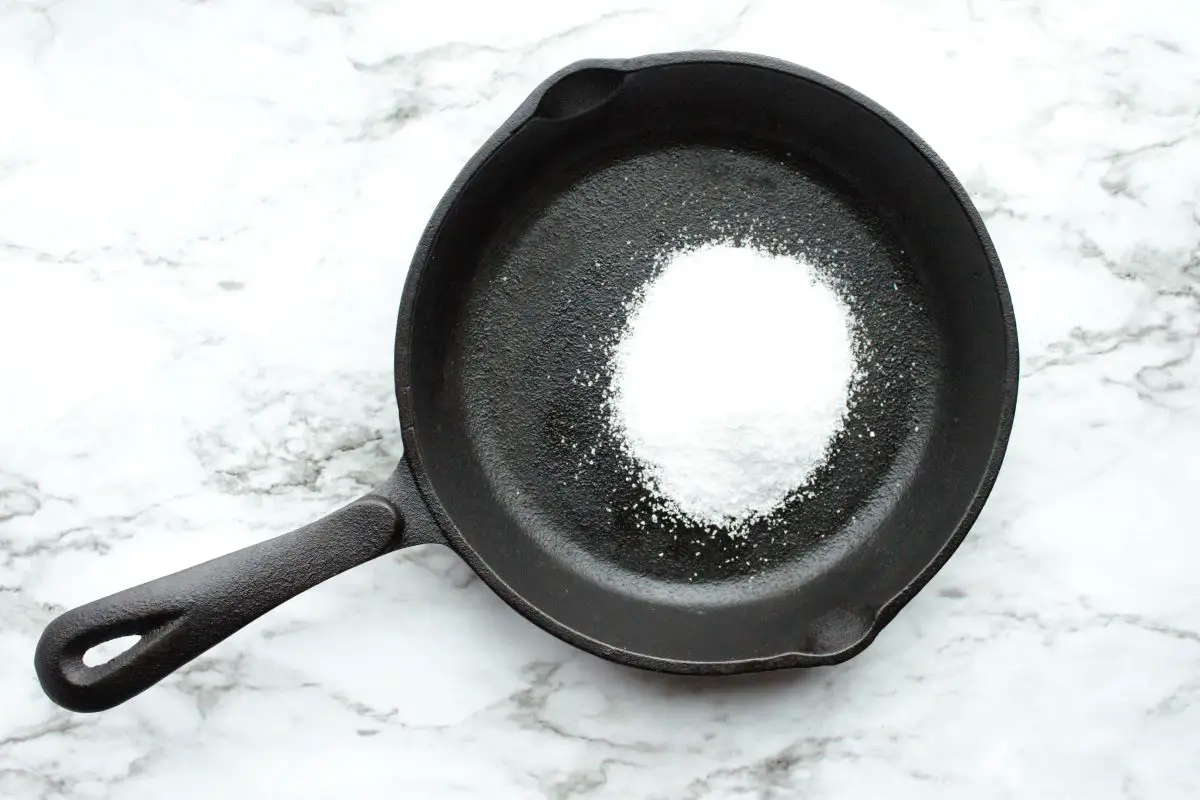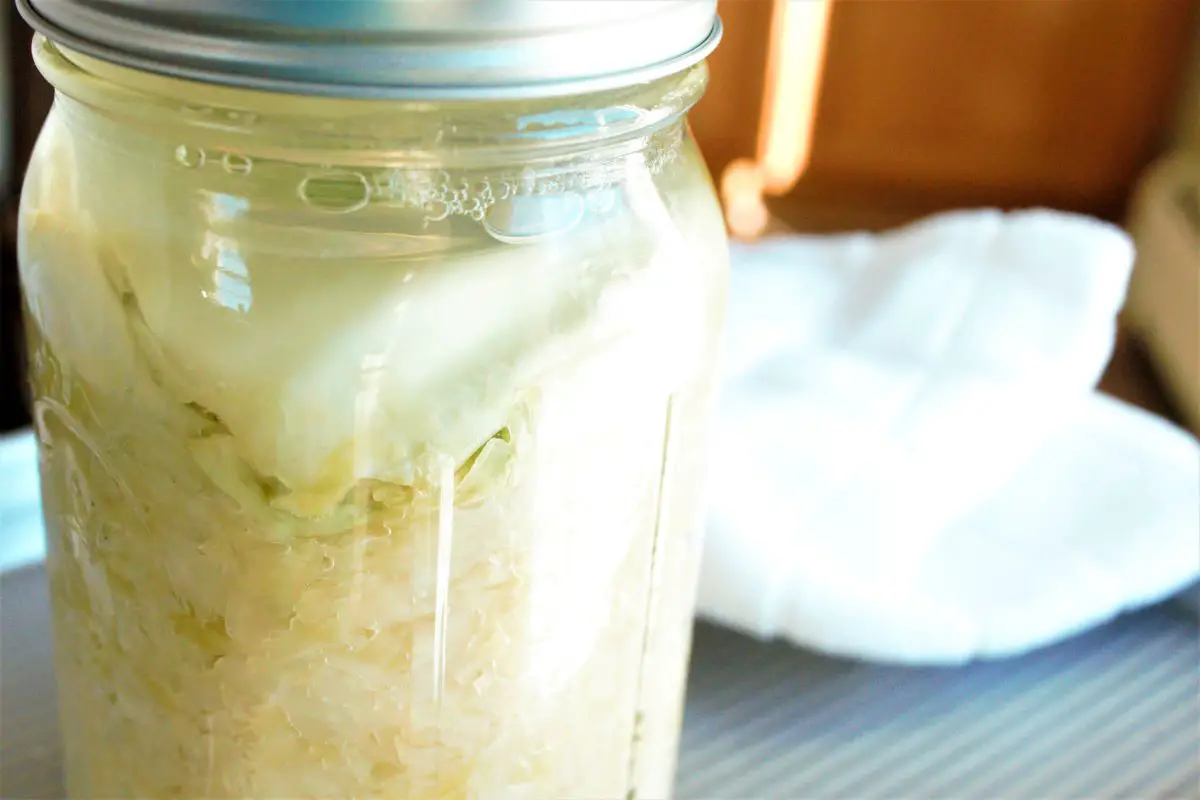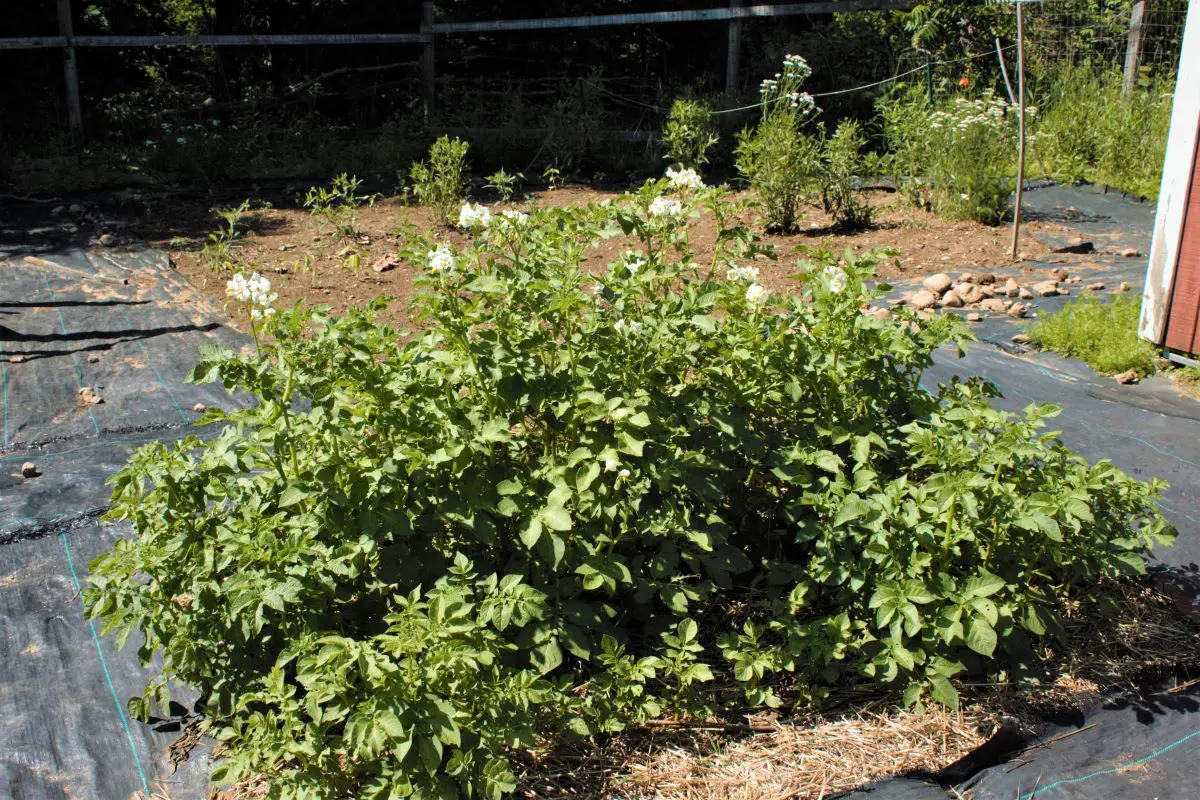If I told you that cleaning cast iron pots and pans is so much easier than cleaning any other type of kitchen cookware would you believe me? Well, brace yourself because this is actually a true fact. In fact cleaning cast Iron cookware couldn’t get any easier, and in this blog post I am going to show you how easy it is in just 6 simple steps.
HOW TO CLEAN CAST IRON COOKWARE
- Wipe off with a clean dishrag
- Rinse under hot water
- Scrub with kosher salt
- Boil water in it
- Leave it as is
- Scrub using a stainless steel scrub
If you have read any of my earlier posts, you would know that I am not necessarily a health freak per-say, but I do love to live a healthy lifestyle, and provide my family with a healthy lifestyle as well.
I believe that cast Iron is one of the best things that I’ve invested in for our family’s health. Read more on that in this blog post Best Cookware 2021 – Stainless Steel And Cast Iron Cookware to learn why I love cast Iron so much.
As a side note, cast Iron is clearly made of Iron. As a person who suffered from anemia in every single pregnancy that I’ve had so far, that can be a pretty big deal for me.
Even though the amount of iron that cast Iron can add to my diet is minimal, it is still better than nothing.
Here are a few of my favorite cast Iron pots and pans that I currently own, and love.
WIPE OFF WITH A CLEAN DISHRAG
Unlike most kitchen cookware, cast Iron cookware does not require that much cleaning. If the cast iron pot or pan is fairly clean with no stuck bits or acidic food remaining on it, a simple wipe with a clean dishrag or kitchen towel will do the trick. You don’t even need to use water.
After you give it a quick wipe, you can reheat it on medium to high heat until it reaches the smocking point to kill off any bacteria that might be present. however, this step is not necessary unless there was any water present on the pan when cooking.
If you are too squeamish and you don’t like the idea of “simply wiping it”, you can run it under hot water, and wipe it with a dishrag without the use of any soap. Once you are satisfied with it’s cleanliness, you can then dry it off with a kitchen towel, place on medium heat to allow it to dry completely.
RINSE UNDER HOT WATER
If you have used your cast iron skillet to cook soups and stews, béchamel sauce, or anything of the sort, you can give it a good rinse under hot water. Make sure that the water you’re rinsing it with is super hot to ensure that you are removing any remaining food residue.
While rinsing under hot water, give the cast iron skillet a gentle scrub with a dish rag.
Dry it with a clean kitchen towel, and place over the stove on medium heat until all the remaining water has evaporated. Remove from the heat and set aside.

SCRUB WITH KOSHER SALT
If after you have rinsed your cast iron skillet and dried it – it still has bits of stuck on food, Place some coarse Kosher salt, or coarse sea salt into the skillet, and using a dry dishrag, give the pan a good scrubbing until you notice that the stuck bits of food are released from the pan.
You can now remove the salt, give it a quick rinse, dry it, place it over medium heat until all the water has evaporated.
BOIL WATER IN IT
Cooking certain food in a cast Iron skillet can take a toll on it, but do not worry, this can be solved with just a few simple steps. Acidic food such as anything with tomato sauce, apple sauce or anything of the sort can remove some of the seasoning off any cast iron cookware.
To insure that all of the acidic food residue is removed, I like to place some water into my cast iron skillet and boil it for a few minutes. perhaps up to 10 minutes. This helps release any residue that the acidic food has left in the pan.
Once you have boiled the water in your cast iron pan, remove it off the heat, and empty it immediately from the boiling water. Then you’ll want to rinse it directly under extremely hot water to rinse off anything that has been left over after you have emptied it.
While you are rinsing the pan, give it a gentle scrub using either a dishrag or a gentle scrubbing tool with a long handle to protect yourself from getting burned.
Make sure that you are using good oven mitts while you are handling the hot pan.
This technique can also be helpful if you have stubborn stuck on food that does not want to release itself from the pan using the salt scrubbing technique.
LEAVE IT AS IS
If you have fried something like bacon or the like in your cast iron skillet, you can simply leave the grease in the pan and use it to fry other foods.
If you do not like the idea of leaving the bacon fat in the pan because you’re afraid it might go rancid, or if you want to use the pan for another purpose, you can empty the cooled grease into a jar and store that in the fridge.
Your pan should be ready to use again.

SCRUB USING A STAINLESS STEEL SCRUB
If you have super stubborn food that really doesn’t want to get off your skillet, you can use a stainless steel scrub to scrub them off.
Stainless steel scrubs are specifically designed for cast Iron cookware. They help remove the stuck on food without getting rid of the seasoning.
If using the stainless steel scrub alone does not work perfectly, you can use a bit of soap, but you will have to re-season the pan again.
CARE AFTER CLEANING
It is important to give your cast iron cookware a little bit of love after you have cleaned it and dried it off completely over the heat. If there is no water residue present on it, allow it to cool completely, or until it is cool enough to handle.
Place a little bit of flaxseed oil, vegetable oil, coconut oil, bacon fat, or olive oil in the pan. Using a lint free kitchen towel, wipe the pan/pot with the oil to cover it completely. Remove any excess oil to prevent the pan from becoming sticky.
If the bottom of the pan was also exposed to water, make sure to cover it with the oil as well.
If the bottom of the pan is not covered with oil, you can simply reheat the pan over the stove over medium heat until it reaches the smoking point. Then, simply remove it off the heat, and allow it to cool. It is now ready to be used again.
If the bottom of the pan is covered in oil, Preheat the oven to 450 F, place the pan into the oven, and heat it for 5 to 10 minutes or until it reaches the smoking point. Turn off the oven, and carefully remove the pan from the oven using thick oven mitts. The pan is now ready to be used again.
If your pan still has oil on it after cleaning it using the gentle previous methods, then this step is unnecessary.
THINGS TO AVOID WHEN CLEANING CAST IRON POTS AND PANS
There are a few things that you’ll want to avoid when cleaning your cast iron pots or pans. Some of those things are, using soap, scrubbing using a steel wool scrub, soak in water, and exposing them to extreme temperature changes.
while using soap, or scrubbing with a steel wool scrub may seem like a tempting ideas, they will end up stripping any cast iron skillet from its well seasoned glory. Seasoning your cast Iron skillet after using these methods is definitely a must and not an option. Otherwise, you may end up in a very sticky situation.
Soaking your cast iron skillet must also be avoided at all costs. Soaking will not only strip the seasoning off of your skillet, but it will, more importantly, cause it to rust.
Last, but not least, exposing your cast iron skillet to extreme temperature changes will damage your skillet by creating minor fractures in it. An example would be taking an extremely hot pan and rinsing it under cold water.
You always want to try to either match the temperature of the pan when you are rinsing it or introducing food to it, or you want to gradually bring up or bring down its temperature. This, I believe, applies to not only cast iron cookware, but to all cookware.
RE-SEASONING YOUR CAST IRON SKILLET
If non of the tips provided above worked for you, and you had to resort to using soap and scrubbing your cast iron cookware, re-seasoning it is a must and it is a very simple step.
Preheat oven to 450 F
After you have thoroughly dried your cast iron skillet with the use of heat, all remaining water have evaporated and there is absolutely no presence of water whatsoever on the skillet, put a little bit of flaxseed oil, vegetable oil, or any edible oil of choice into the pan.
Using a clean and dry, lint free kitchen towel, spread the oil all over the skillet. inside, outside, and don’t forget the handle.
Remove any excess oil off the skillet using the dry side of the towel. The skillet should look shimmery, but not “oily”.
Place the cast iron skillet into the preheated oven, and bake for 1 hour. Allow it to cool completely.
You will know if your cast iron skillet is ready to be used if it has a shiny appearance after being baked, and it has no dry spots present.
If there are still dry spots present in your cast iron skillet after re-seasoning it, then it is ready for a second re-seasoning. It shouldn’t take more than three times for your cast iron skillet to be fully seasoned. Ideally, the first re-seasoning should be sufficient to get a well seasoned cast iron pan.
If this article was helpful to you, or if you have any questions, please leave your comments in the comment section below, and don’t forget to share this article with your friends and family!
While you’re here…
CHECK OUT THESE RECIPES
How To Cook Brussel Sprouts In Cast Iron Pan
Nut Free- Vegan – Gluten Free Focaccia Bread Recipe
Shish Tawook Mediterranean Chicken Shish Kabob Recipe
Gluten Free Rice Flour Flatbread
Disclosure: Some of the links in this post are “affiliate links”. This means if you click on a link and purchase the item, I will get an affiliate commission. It will not cost you any extra money, but it will help me pay for this website, and it will help me to keep providing you with helpful articles such as this one. I only post links to products that I personally use and love, or to products that I wish I could have, and that could be of value to you. The information that I provide you with, my blog, videos, and many resources are free.





Be the first to reply